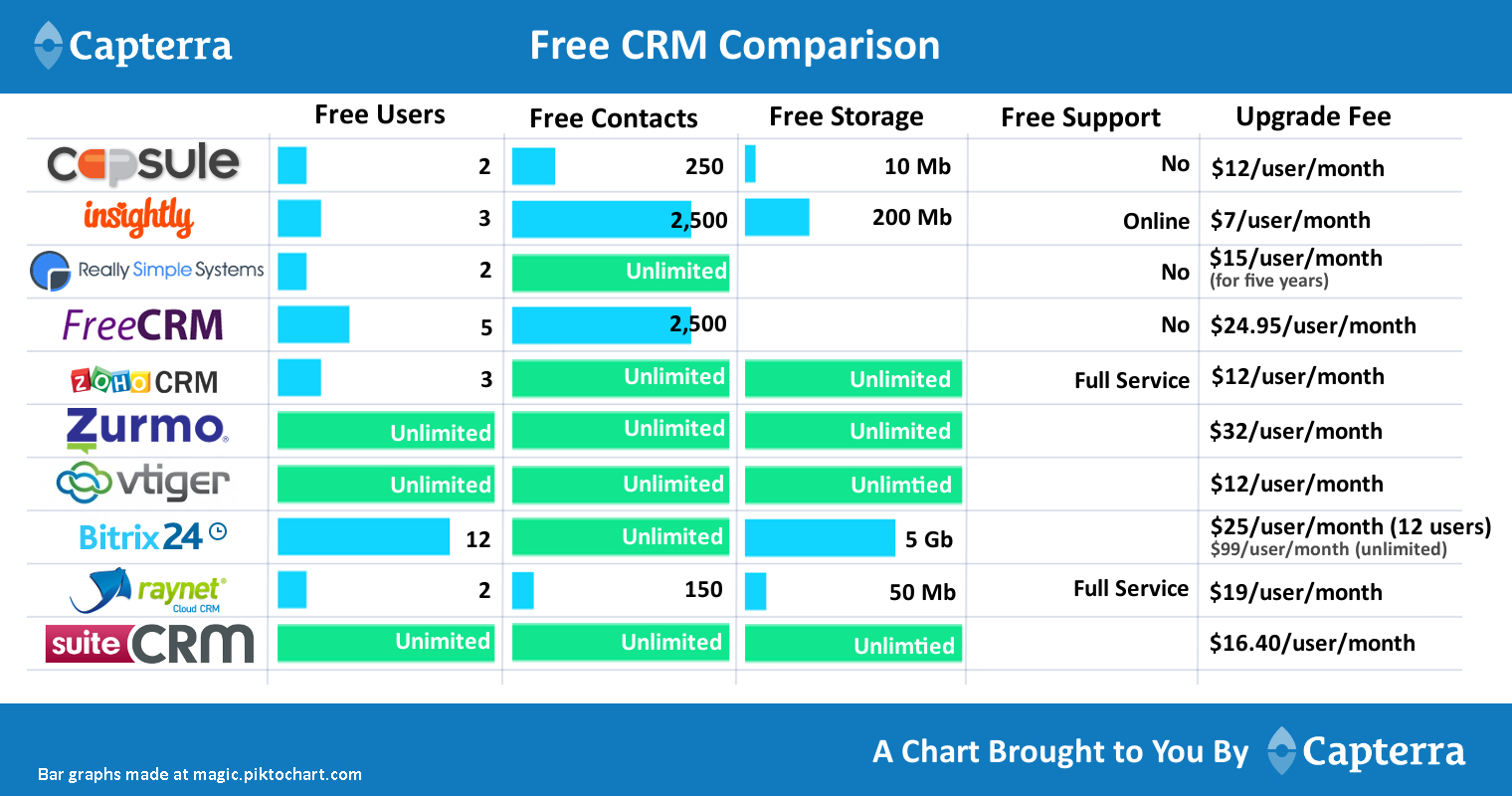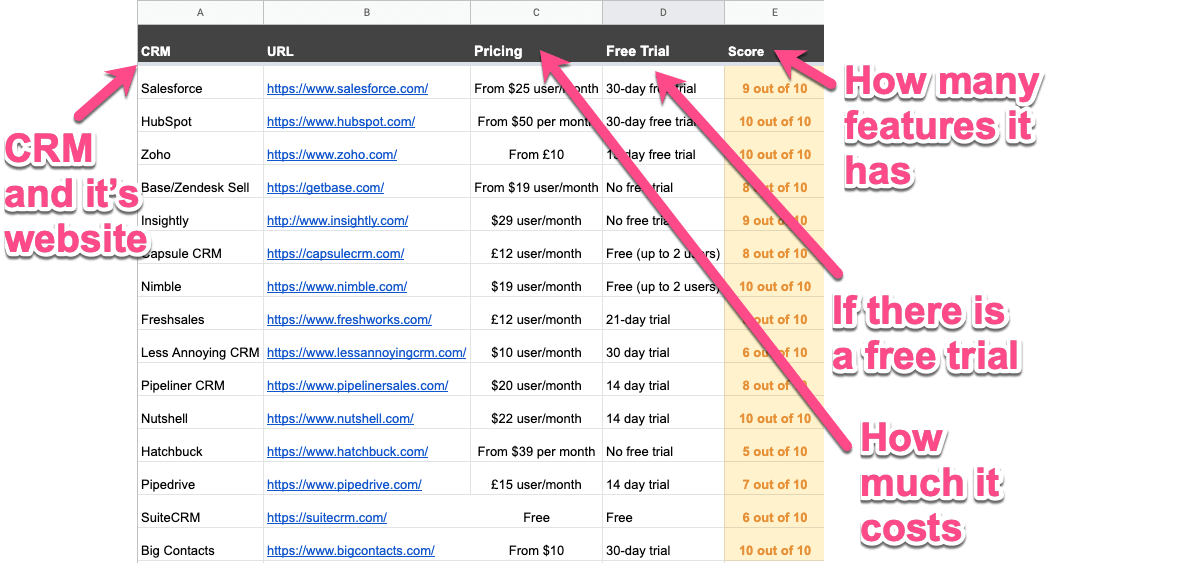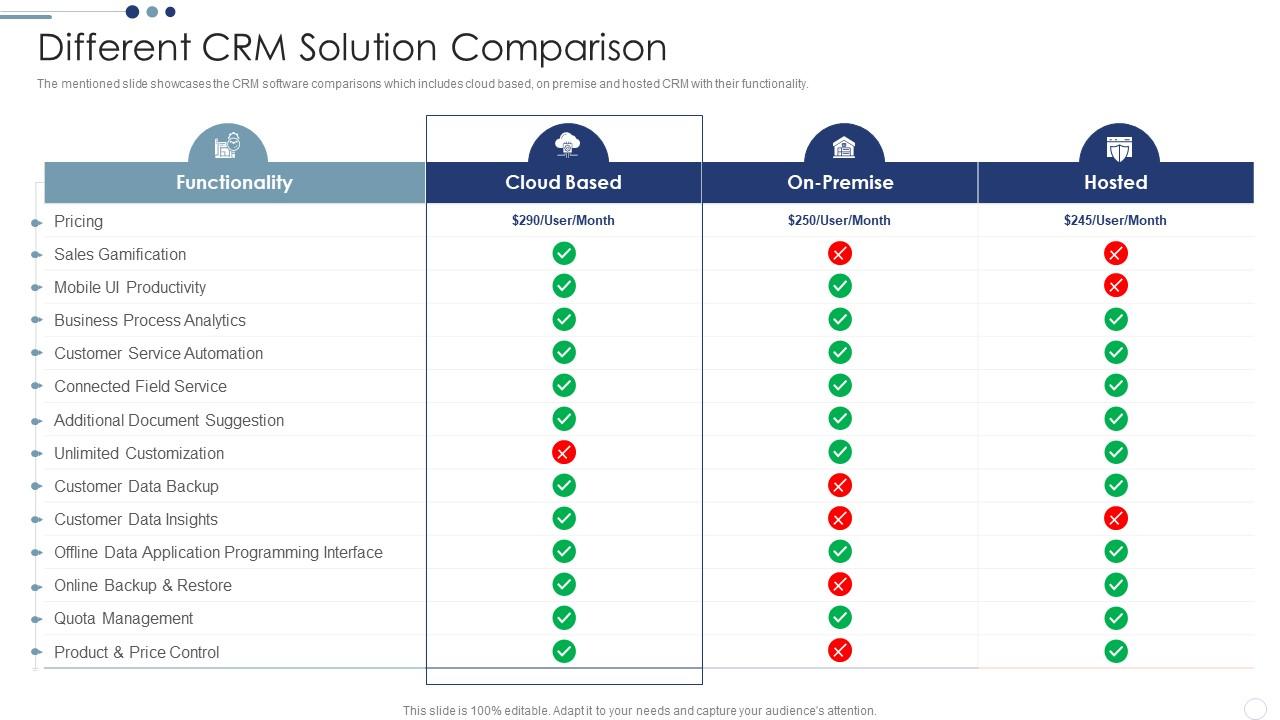In the realm of customer relationship management (CRM), choosing the right software is crucial for streamlining operations and fostering customer satisfaction. With our CRM comparison spreadsheet, you embark on a journey to evaluate and compare leading CRM solutions, empowering you to make an informed decision that aligns with your business goals.
This comprehensive guide delves into the intricacies of CRM evaluation, providing you with the knowledge and tools to assess key features, compare pricing plans, and uncover the strengths and weaknesses of different vendors. By leveraging our spreadsheet, you gain a clear understanding of the CRM landscape, enabling you to make a confident choice that drives business success.
CRM Comparison Spreadsheet

A CRM comparison spreadsheet is a valuable tool for businesses looking to select the best CRM software for their needs. It allows you to compare the features, pricing, and customer reviews of multiple CRM solutions side-by-side, making it easier to identify the best fit for your organization.Creating
a CRM comparison spreadsheet is a straightforward process. First, gather information about the CRM solutions you’re considering. This can be done by visiting their websites, reading reviews, and talking to other businesses that have used them. Once you have gathered this information, you can create a spreadsheet that includes the following columns:
-
-*CRM Name
The name of the CRM solution.
-*Features
A list of the key features offered by the CRM solution.
-*Pricing
The cost of the CRM solution.
-*Customer Reviews
A summary of the customer reviews for the CRM solution.
Once you have created your spreadsheet, you can use it to compare the different CRM solutions and identify the best fit for your business. Consider the following factors when comparing CRM solutions:
-
-*Features
The features offered by the CRM solution should meet your business needs.
-*Pricing
The cost of the CRM solution should fit your budget.
-*Customer Reviews
The customer reviews for the CRM solution should be positive.
By following these steps, you can create a CRM comparison spreadsheet that will help you select the best CRM software for your business.
CRM Evaluation Criteria

Selecting the optimal CRM necessitates a thorough evaluation process. To make an informed decision, it is crucial to establish a set of criteria that aligns with your specific business objectives.
When assessing CRMs, consider the following key aspects:
Functionality
- Core CRM capabilities:Contact management, lead tracking, opportunity management
- Industry-specific features:Tailored to the unique requirements of your industry
- Integration capabilities:Seamless integration with other business applications (e.g., email, marketing automation)
Data Management
- Data storage capacity:Sufficient space to accommodate your growing customer data
- Data security:Robust measures to protect sensitive customer information
- Data accessibility:Easy access to customer data for all authorized users
Reporting and Analytics
- Customizable reports:Ability to create reports tailored to your specific business needs
- Real-time insights:Access to up-to-date data for informed decision-making
- Predictive analytics:Capabilities to forecast future trends and customer behavior
User Experience
- Intuitive interface:Easy to navigate and use for both technical and non-technical users
- Mobile accessibility:Support for accessing the CRM on smartphones and tablets
- Customization options:Ability to tailor the CRM to fit your specific workflows
Scalability, Crm comparison spreadsheet
- Growth potential:Ability to accommodate your expanding business needs
- Upgrade flexibility:Options to upgrade to more advanced versions as your business grows
- Support for multiple users:Scalable to support a growing team of users
Pricing
- Cost structure:Subscription fees, licensing costs, implementation charges
- Value for money:Assess the features and functionality offered in relation to the cost
- Return on investment (ROI):Estimate the potential benefits and ROI from implementing the CRM
Last Point

The CRM comparison spreadsheet serves as an invaluable resource for businesses seeking to optimize their customer interactions. Through a meticulous evaluation process, you can identify the CRM solution that seamlessly integrates with your unique requirements and propels your organization towards enhanced efficiency, productivity, and customer loyalty.
Embrace the power of data-driven decision-making and elevate your CRM strategy to new heights.
Question Bank: Crm Comparison Spreadsheet
What are the key benefits of using a CRM comparison spreadsheet?
A CRM comparison spreadsheet provides a structured and organized approach to evaluate multiple CRM solutions, enabling you to compare their features, pricing, and capabilities side-by-side. This simplifies the decision-making process and ensures you select the CRM that best meets your business needs.
How do I create a CRM comparison spreadsheet from scratch?
To create a CRM comparison spreadsheet, start by identifying the essential evaluation criteria for your business. Then, create a table with columns for each vendor, feature, and criterion. Populate the table with data from vendor websites, reviews, and demos. Finally, use the spreadsheet to compare and contrast the different CRM solutions.
What are some common mistakes to avoid when comparing CRMs?
Common mistakes to avoid when comparing CRMs include relying solely on vendor claims, focusing only on price, and neglecting to align the CRM with your specific business goals. It’s crucial to conduct thorough research, consider your unique requirements, and involve key stakeholders in the evaluation process.
